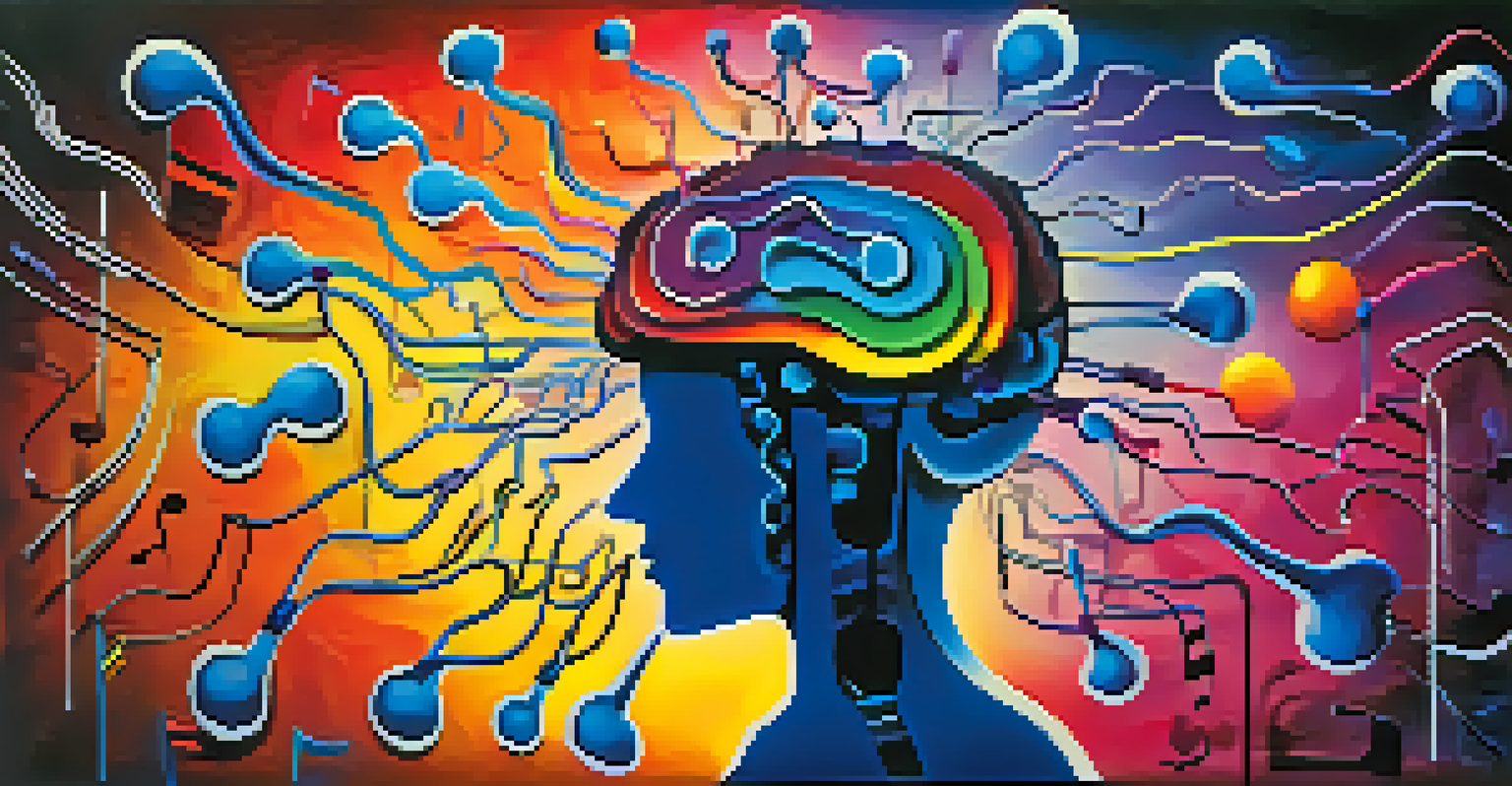The Science Behind Music-Induced Pain Relief Mechanisms

Understanding the Connection Between Music and Pain Relief
Music has been a part of human culture for centuries, but its role in pain management is gaining attention in modern science. Researchers have found that music can trigger physiological responses that help reduce pain perception. This connection is rooted in the brain's complex mechanisms that process both sound and pain.
Music can change the world because it can change people.
When we listen to music, our brain releases neurotransmitters like dopamine, which are associated with pleasure and reward. This biochemical response can create a sense of well-being that counteracts feelings of pain. Consequently, music serves as a powerful tool in enhancing our emotional state while simultaneously dulling physical discomfort.
Furthermore, music can distract our minds from pain, much like how a good movie or book can transport us away from reality. This distraction technique is particularly useful in clinical settings, where patients are often overwhelmed by anxiety and discomfort.
The Role of Neurotransmitters in Music-Induced Pain Relief
Neurotransmitters are chemical messengers in the brain that play a crucial role in how we experience pain. When we engage with music, our brains produce these substances, particularly endorphins, which are natural painkillers. This release can create a euphoric feeling, providing relief from both acute and chronic pain.

Endorphins work by binding to the same receptors as opioids, effectively blocking the sensation of pain. This biological mechanism explains why some patients report improved pain management during music therapy sessions. Thus, music not only entertains us but also acts as a natural remedy.
Music Reduces Pain Perception
Listening to music can trigger neurotransmitters like dopamine and endorphins, which help alleviate feelings of pain.
Additionally, the rhythmic patterns and melodies in music can influence our heart rate and breathing, promoting relaxation. This physiological change can further enhance the pain-relieving effects, making music an accessible and enjoyable option for many.
Music Therapy: A Clinical Approach to Pain Management
Music therapy is an established discipline that uses music to address physical, emotional, and cognitive needs. Certified music therapists tailor their approach based on individual patient needs, making it a personalized experience. This can be especially beneficial in pain management, as it allows for a blend of creativity and science.
The beautiful thing about music is that it transcends language.
In clinical settings, music therapy has been shown to reduce pain perception in patients undergoing various treatments, such as surgery or chemotherapy. By integrating music sessions into their care, healthcare providers can enhance patients' overall comfort and emotional well-being.
Moreover, patients often report feeling more in control of their pain when they participate in music therapy. This empowerment can lead to improved outcomes and a more positive healthcare experience.
The Impact of Genre and Personal Preference on Pain Relief
Not all music is created equal when it comes to pain relief; individual preferences and genres play a pivotal role. Research indicates that people tend to respond more positively to music they enjoy, which can amplify the analgesic effects. For instance, a favorite song can evoke happy memories and feelings, further distracting from pain.
Additionally, specific genres such as classical music, ambient, or nature sounds are often noted for their calming effects. These soothing sounds can reduce anxiety and promote relaxation, which are essential components of effective pain management.
Personal Preferences Matter
Individuals experience enhanced pain relief when listening to music they personally enjoy, highlighting the importance of musical preference in therapy.
It's important for individuals to explore different types of music to find what resonates best with them. Personalizing the music experience can significantly enhance its effectiveness in alleviating pain.
The Relationship Between Rhythm and Pain Perception
Rhythm is a fundamental aspect of music that has profound effects on our bodies and minds. Studies have shown that rhythmic elements can influence our heart rate and even our perception of pain. This connection suggests that engaging with rhythmic music can create a soothing effect that distracts from discomfort.
When we tap our feet or move to a beat, we inadvertently engage our bodies in a way that can diminish pain perception. This physical engagement, combined with the emotional response to music, creates a powerful synergy in pain relief.
Moreover, rhythmic music can aid in rehabilitation, encouraging patients to move and participate in physical therapy. This not only helps with pain management but also supports recovery and mobility.
Cultural Differences in Music and Pain Perception
Cultural background plays an influential role in how individuals perceive and respond to music and pain. Different cultures have unique musical traditions and healing practices that can impact pain management strategies. For instance, in some cultures, traditional music is integral to rituals that aim to alleviate suffering.
Moreover, the emotional connotations associated with specific songs or genres can vary widely across cultures. Understanding these cultural nuances can help healthcare providers better tailor music therapy to meet the needs of diverse patient populations.
Cultural Context Influences Experience
Cultural background shapes how people perceive music and pain, suggesting that personalized music therapy should consider these cultural differences for better outcomes.
Incorporating culturally relevant music into pain management practices can enhance patient engagement and improve outcomes, making it essential for healthcare professionals to consider these factors.
Future Research Directions in Music and Pain Management
As the understanding of music's impact on pain relief continues to grow, so does the potential for future research. Scientists are exploring various aspects of music therapy, including technology-driven approaches like virtual reality and apps that provide personalized music experiences. This innovative exploration could revolutionize how we integrate music into pain management.
Additionally, more studies are needed to understand the long-term effects of music therapy on chronic pain conditions. Understanding how music can influence brain plasticity over time may lead to new therapeutic interventions.

Lastly, interdisciplinary collaboration between musicians, healthcare providers, and researchers can foster new insights into the healing power of music, paving the way for more effective pain relief strategies.